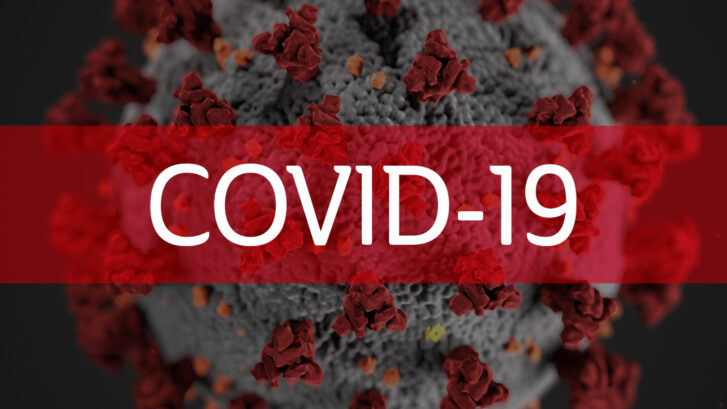Six Types of COVID-19?
Further underscoring the difficulty doctors are having treating the novel coronavirus, SARS-CoV-2, a new study from King’s College in London may have been able to pinpoint six general types of COVID-19, characterized by the effects it has on different individuals.
Because the disease has been with us only a few months, much of the research about it has not been peer reviewed. That is, scrutinized for flawed methodology. Our concierge doctors at MD 2.0 generally lean toward caution in reporting on isolated studies which lack verification from other researchers.
But because we’ve seen the many, often confusing, ways the virus manifests in those who contract it, we decided to share this research. We hope it might help you better recognize the myriad of symptoms that can indicate a COVID-19 infection and know when to get help.
How these findings can help
Researchers hoped the study results will help doctors decide how best to treat patients with various symptoms, and thereby save hundreds of lives.
They found that the majority of patients who eventually required breathing support didn’t reach that stage until the 13th day after they began showing symptoms. Until this study, however, doctors had no way of knowing in advance which patients might need such intensive care.
“If you can predict who these people are at day five, you have time to give them support and early interventions such as monitoring blood oxygen and sugar levels, and ensuring they are properly hydrated,” Dr. Claire Steves, a co-leader on the study, said in a statement. Such treatment could be administered at home, she added, preventing hospitalizations and saving lives.
In attempting to treat COVID-19, doctors have frequently been perplexed by the numerous ways the virus has found to attack humans. These new findings can help sort out the confusion.
“I think [this study is] very, very interesting,” Dr. Bob Lahita, who was not involved in this study. He told CBS News, “Among the patients I see, those who recovered, many of them present different ways. Some people with fever and some without fever, and some with nausea and vomiting, some people with diarrhea, etc.”
The study results
This study used data from a symptom tracker app to gather information on about 1,600 U.K. and U.S. COVID-19 patients. They regularly reported their symptoms on the app during March and April.
Based on their reporting, researchers categorized the symptoms into six general clusters or types, and two main levels of severity within those six.
Level One: Types 1 through 3 experienced more mild infections and were more likely to recover.
Type 1: Flu-like with no fever, including headache, loss of smell, muscle pains, cough, sore throat, and chest pain
Patients at this level have a 1.5 percent chance of eventually requiring such breathing support as a ventilator or supplemental oxygen.
Type 2: Flu-like with fever, including headache, loss of smell, cough, sore throat, hoarseness, and loss of appetite
About 4.4 percent of patients at this level eventually required breathing support.
Type 3: Gastrointestinal, with headache, loss of smell, loss of appetite, diarrhea, sore throat, chest pain, and no cough
Patients presenting with these symptoms had only a 3.3 percent chance of ultimately needing breathing support.
Level Two: Types 4 through 6 represented more serious infections and were more likely to lead to adverse outcomes.
Type 4: Severe level 1 with fatigue, as well as headache, loss of smell, cough, fever, hoarseness, and chest pain
Those who listed these symptoms needed breathing support at a rate of 8.6 percent.
Type 5: Severe level 2 with confusion, as well as headache, loss of smell, loss of appetite, cough, fever, hoarseness, sore throat, chest pain, fatigue, and muscle pain
Confusion is the main presenting characteristic of this level, indicating the virus had reached the brain. Those at this level required breathing support about 10 percent of the time.
Type 6: Severe level 3 with abdominal and respiratory symptoms including headache, loss of smell, loss of appetite, cough, fever, hoarseness, sore throat, chest pain, fatigue, confusion, muscle pain, shortness of breath, diarrhea, and abdominal pain
This is the most dangerous level of COVID-19, in which the virus has invaded every part of the body. Nearly 20 percent of those who fall into this category will require breathing support. They are also the most likely to die from the disease.
The ascending types also tend to predict the need for hospitalization. Just 16 percent of patients in Type 1 required hospitalization, compared to nearly half of those with Type 6. The latter is also the most likely to result in the death of the patient.
The mystery that is COVID-19
Remember many people who are infected with the SARS-CoV-2 virus have some, few, or no symptoms at all, though they can still spread the virus (hence the crucial need for face coverings and social distancing by everyone).
Note also that the symptoms listed above are not all-inclusive. There are more coronavirus symptoms constantly being discovered. The King’s College researchers, for example, also identified skin rash as a telltale sign. Others have noted inflamed or so-called “frostbite toes,” sudden numbness in arms or legs, and conjunctivitis or “pink eye” as possible early indicators of infection.
Still, we applaud the researchers for attempting to make some order out of the chaos that is COVID-19. This is a difficult disease to diagnose and treat, although we are learning more every day.
Please don’t hesitate to contact us if you have any questions.

